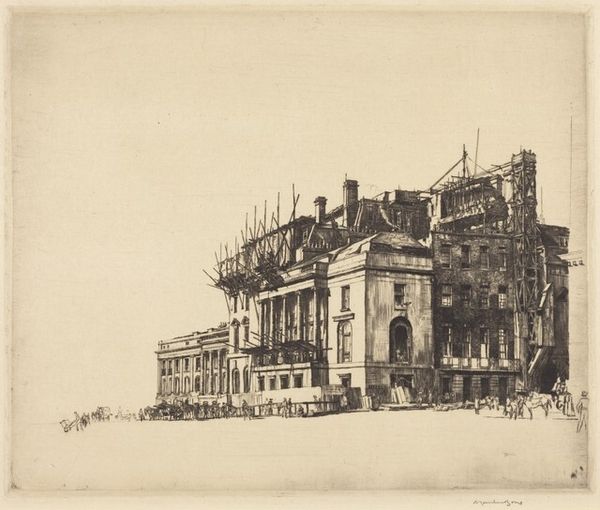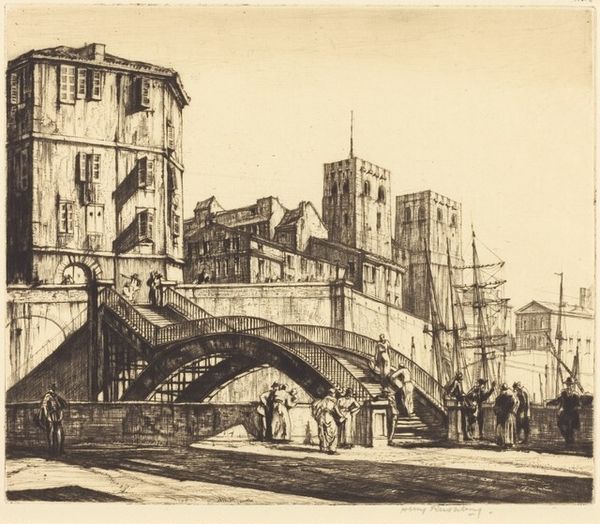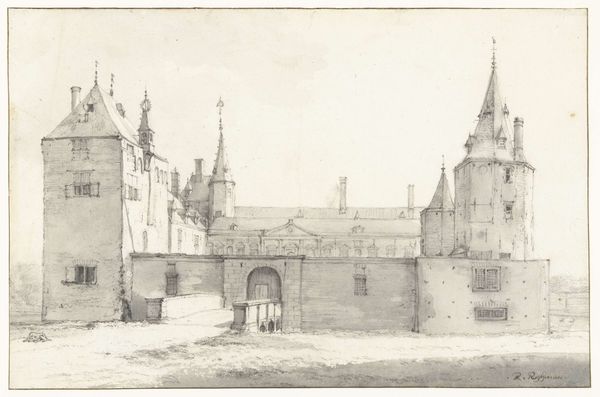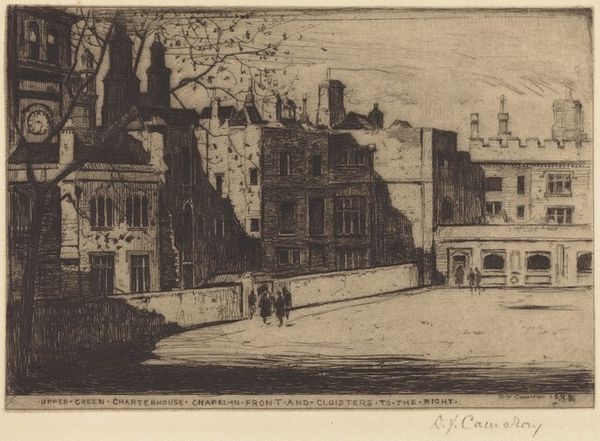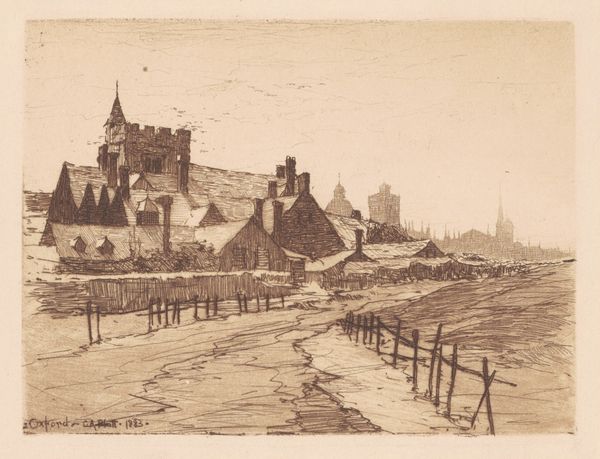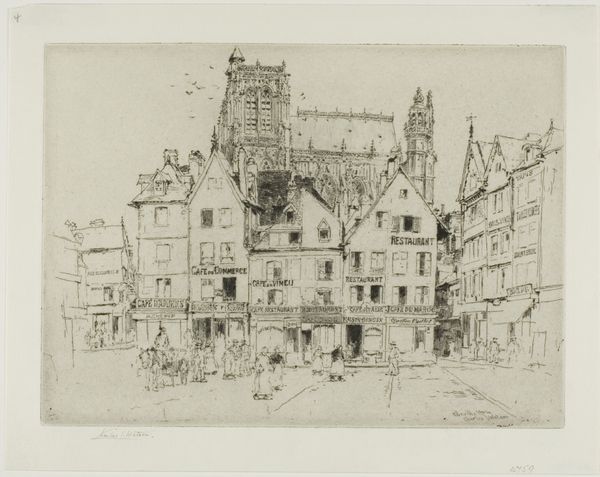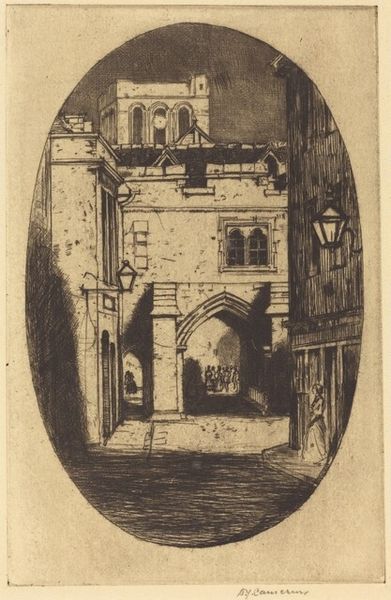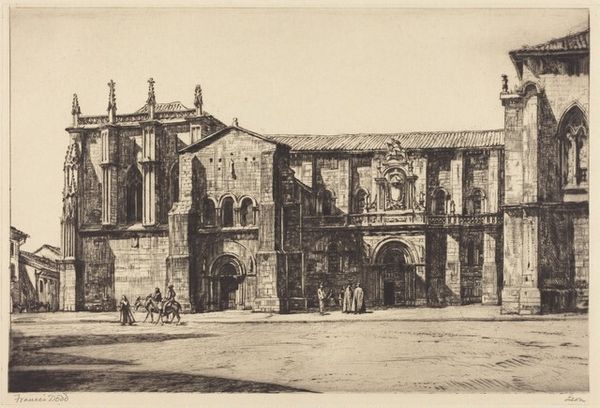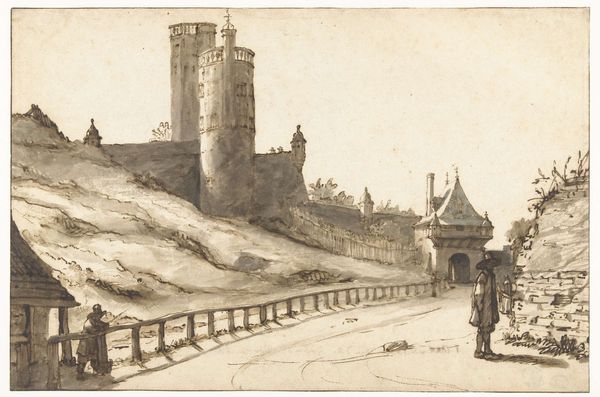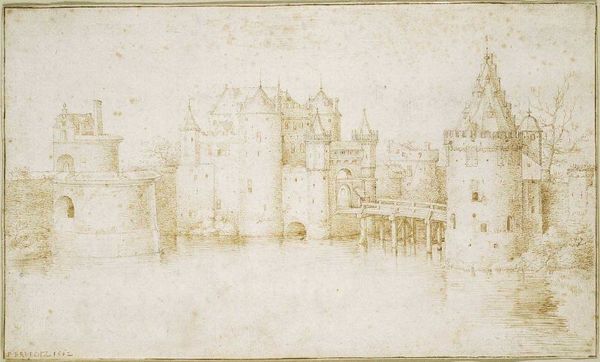
drawing, graphic-art, print, etching, architecture
#
drawing
#
graphic-art
# print
#
etching
#
landscape
#
scottish-colorists
#
cityscape
#
architecture
#
realism
Copyright: National Gallery of Art: CC0 1.0
David Young Cameron made this etching, "The Palace of the Stuarts," sometime in the early 20th century. The printmaking process leaves its mark all over this image. Cameron likely used a copper plate, coating it with wax before drawing his composition with a sharp needle. Once the wax was scratched away, the plate would have been submerged in acid, biting the exposed lines. This painstaking method allowed Cameron to achieve remarkable detail, capturing the Palace’s architectural grandeur. Look closely, and you can see the individual lines that define the stonework, the figures in the courtyard, and the atmospheric sky. The velvety texture comes from the ink clinging to the etched lines, creating a rich, tonal effect. This technique, associated with earlier masters like Rembrandt, adds depth and complexity to the image. Cameron’s mastery of etching elevates a mechanical process to high art, blurring the lines between craft and fine art. It reminds us that even in the age of mechanical reproduction, the artist's hand remains essential.
Comments
No comments
Be the first to comment and join the conversation on the ultimate creative platform.
